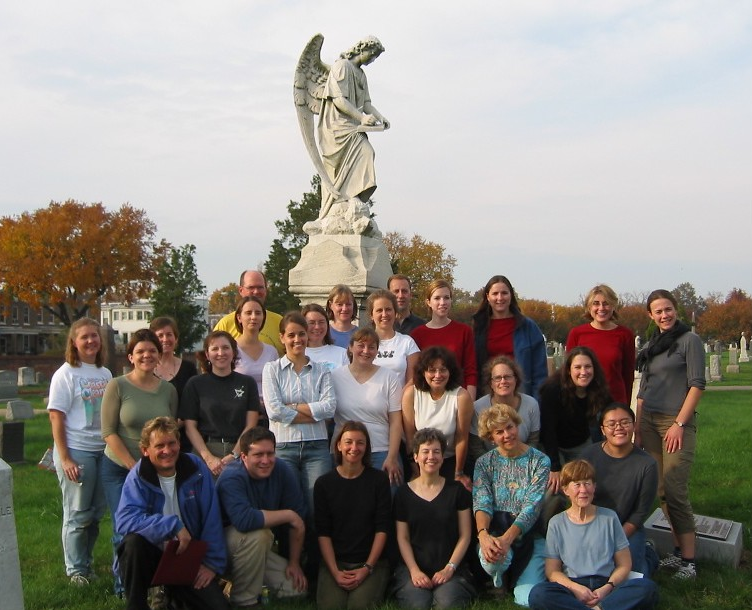
In 2004 and 2005, 27 members of the Guild volunteered their conservation services to Historic Congressional Cemetery on Capitol Hill. Under the general supervision of the site manager, the conservators and conservation interns re-housed archives in the office building, and cleaned and re-set stone monument markers outdoors.
The outdoor work was supervised and coordinated by Catherine Dewey, of the National Park Service. She demonstrated the proper way to gently clean stone markers and to reset stones when needed. 31 stones were cleaned and an additional 220 stones were surveyed.
Congressional Cemetery was founded in 1807 to serve the parish of Christ Church and the surrounding D.C. community. Within months of its establishment it became the first burial site of a United States congressman and members of congress were buried there for the subsequent 50 years. In addition to congressman, many other notable Americans have been buried there including U.S. Capitol Building architect William Thorton, Washington Monument architect Robert Mills, civil war photographer Matthew Brady, national anthem composer John Phillip Sousa, and the first FBI director J. Edgar Hoover. Unfortunately, the cemetery had fallen into disrepair in the 20th century and in the 1970s the Association for the Preservation of Historic Congressional Cemetery formed to rescue the cemetery from further neglect and damage.
For the Angels event and other volunteer events, survey forms were created to facilitate the documentation of the types of gravestones present and the types of damage. Volunteers simply had to check a box corresponding to the gravestone shape and the damages they saw. The most common condition issues were broken mortar joins, leaning stones, worn inscriptions and biological growth. During the WCG Angels project, volunteers were broken into groups whose tasks were surveying, cleaning, and resetting stones. There was also an additional group who completed rehousing the archives of the cemetery. The surveyors used the form mentioned above to document the stones. A dilute solution of D/2 Architectural Antimicrobial was applied with wooden handled brushes and then rinsed away with water. Resetting was completed by carefully digging out stones to determine if they were stable enough to be reset. If the stones were stable, they were removed and a bed of bricks and gravel was laid down. Then the stones were put back on in place and dirt was replaced around the stone. If the stones were not stable enough to undergo resetting, the condition was noted and the stone was simply reburied.
Scroll through more photos in the Flickr album below:
